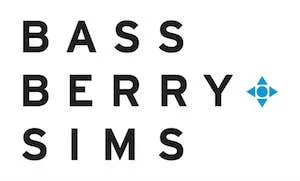- within Coronavirus (COVID-19), Environment and Compliance topic(s)
In our previous article, we outlined steps companies can take now to protect themselves during later government investigations and enforcement actions related to COVID-19 relief funding. These steps include: leverage compliance resources, document the application/funding process, document how money is used, schedule an interim internal review, and respond to employee complaints. In this article we focus specifically on the health care industry and how companies can protect against inevitable government scrutiny after receiving COVID-19 relief funding.
The health care industry must be particularly vigilant about protecting against future enforcement risks because it is a highly regulated industry facing an enforcement perfect storm-fast cash, poor guidance and retrospective review. Congress allocated $175 billion to the U.S. Department of Health and Human Services (HHS) through the Coronavirus Aid, Relief and Economic Security Act Provider Relief Fund (Relief Fund). To support an industry hurt by COVID-19-related patient surges, stay-at-home driven closures and elective procedure treatment delays, HHS adopted a strategy to release relief funds quickly and perform reconciliation on the back end. As a result, HHS released what it touted as "no strings attached" relief funds through a series of general and targeted allocations each with a list of somewhat vague terms and conditions. The only other guidance available were application instructions, where applicable, and a continuously evolving set of frequently asked questions.
Of course, no government funding comes with "no strings attached." The government inevitably will review whether recipients of HHS relief funds met the eligibility requirements and complied with the terms and conditions for using relief funds. Given that any deliberate omission, misrepresentation or falsification of information related to the HHS relief funds comes with potentially severe consequences-including but not limited to revocation of Medicare billing privileges; exclusion from federal health care programs; and/or the imposition of fines, civil damages and/or imprisonment-health care companies should consider the following steps to support their acceptance and use of the funds:
- Monitor Spending. Conditions of receiving relief funds include, among others, that the money only be used to prevent, prepare for and respond to COVID-19 and that it reimburse the recipient for only health care-related expenses or lost revenues attributable to COVID-19. HHS recently clarified that funds can be used for future COVID-19-attributable losses and expenses for the term of the public health emergency. Health care companies that have received funds should evaluate-on a per tax identification number (TIN) basis-both their existing and anticipated COVID-19 attributable expenses and losses, along with the rationale for what expenses are included in those calculations and the comparison points used to determine lost revenues. Failure to monitor spending or explain why its use was proper may expose a health care company to liability. For example, choosing to use the funds to make significant profit distributions instead of rehiring furloughed workers may not comport with the terms and conditions and also may not reflect well on the business as a whole. Finally, do not forget that HHS relief funds cannot be used to pay any individual salary at a rate of over $197,300.00.
- Avoid Overlap. If your company was lucky enough to qualify for funding under the Small Business Administration/Paycheck Protection Program loan program or multiple tranches of the HHS relief fund, you need to ensure that you do not support HHS funding with expenses that were or will be covered by another source of funding. As part of the terms and conditions, recipients of HHS relief funds must certify that they will not use the funds to reimburse expenses or losses that have been reimbursed from other sources or that other sources are obligated to reimburse. Moreover, the same losses and expenses cannot be used to support different tranches of HHS relief funding. A good exercise may be to look at the total funds received from all sources as compared to the total COVID-19 attributable revenue losses and expenses to ensure your losses and expenses at all times exceed the funds received.
- Pull It All Together. While excel spreadsheets may speak volumes to financial teams, most regulatory agencies need some explanation. Consider working with your internal or external legal team to draft a memo to file explaining why you did the financial analysis and your steps for coming to those decisions-e.g., evaluating and relying on industry guidance, contacting the Provider Relief Fund hotline to ask questions and consulting with counsel. Creating a record also helps in the event any employee involved in the decision-making process leaves the company by the time it has to respond to a government investigation or enforcement action. Your goal should be to create a file detailed enough for a new employee to rely on completely in the future. Similarly, your company should document, review and resolve compliance issues raised by employees who may become whistleblowers.
- Save HHS and Industry Guidance. In addition to documenting your rationale for the decisions, an important step to supporting your analysis is to incorporate and maintain copies of HHS, UHG and industry guidance as it existed when you made those decisions, especially given how quickly the guidance is evolving. The rules are changing quickly, and it is almost guaranteed that the guidance in place at the time of your decisions will have evolved by the time the HHS, including the Office of Inspector General, starts looking closely.
Beyond the CARES Act and other funding opportunities, an avalanche of regulatory changes have given health care providers the regulatory flexibility needed to continue providing care in a public health emergency. However, this flexibility also creates regulatory uncertainty. Here are a couple of recommendations for protecting your revenues in light of that uncertainty.
- Evaluate Your Team's Knowledge. Before releasing claims, or if necessary in retrospect, review your billing and coding team's knowledge to evaluate your comfort level that they have kept up with the rapid changes and have billed your claims correctly. If there was lack of clarity on how to handle certain claims, document the issue, the evaluation and the decision based on the then-available guidance. If you have concerns about the accuracy of your claims, seek help now-it is much less expensive to do it now than to have to deal with a payor audit or government investigation.
- No Rest for the Weary. Your teams are probably exhausted with all the change that has occurred. Unfortunately, many of the regulatory changes impacting health care businesses are temporary, meaning the old rules will return. For example, CMS loosened several regulatory requirements to permit broad Medicare coverage of telehealth and remote services, and many states enacted similar flexibilities to promote telehealth coverage by commercial payors. Despite a lot of publicity and promotion of continuing coverage of telemedicine, absent legislative changes-federal for Medicare and state for commercial-those telehealth flexibilities will all revert at the end of the public health emergency. Health care companies need to pay close attention to the end dates and ensure that their systems, operations and billing teams appropriately react to these changes to protect the integrity of the company's revenues.
Please stay tuned for future articles discussing other industries likely to experience aggressive government enforcement measures following the current crisis, including SEC scrutiny of public companies, government contracting, and labor and employment.
If you have questions about what companies can do now to protect themselves during later government scrutiny related to COVID-19 relief funding, please contact the authors.
The articles in the series are available on the Corporate Counsel website and on the firm's related blogs, links below:
- "How Public Companies Can Protect Against SEC Scrutiny Related to COVID-19," (September 16, 2020) and Securities Law Exchange blog (September 21, 2020).
- "How Health Care Companies Can Protect Against Government Scrutiny of COVID-19 Relief," (July 10, 2020) and Inside the FCA blog (July 28, 2020).
- "What Your Company Can Do Today to Protect Against Government Scrutiny of COVID-19 Relief Funding," (June 9, 2020) and Inside the FCA blog (July 23, 2020).
The content of this article is intended to provide a general guide to the subject matter. Specialist advice should be sought about your specific circumstances.




